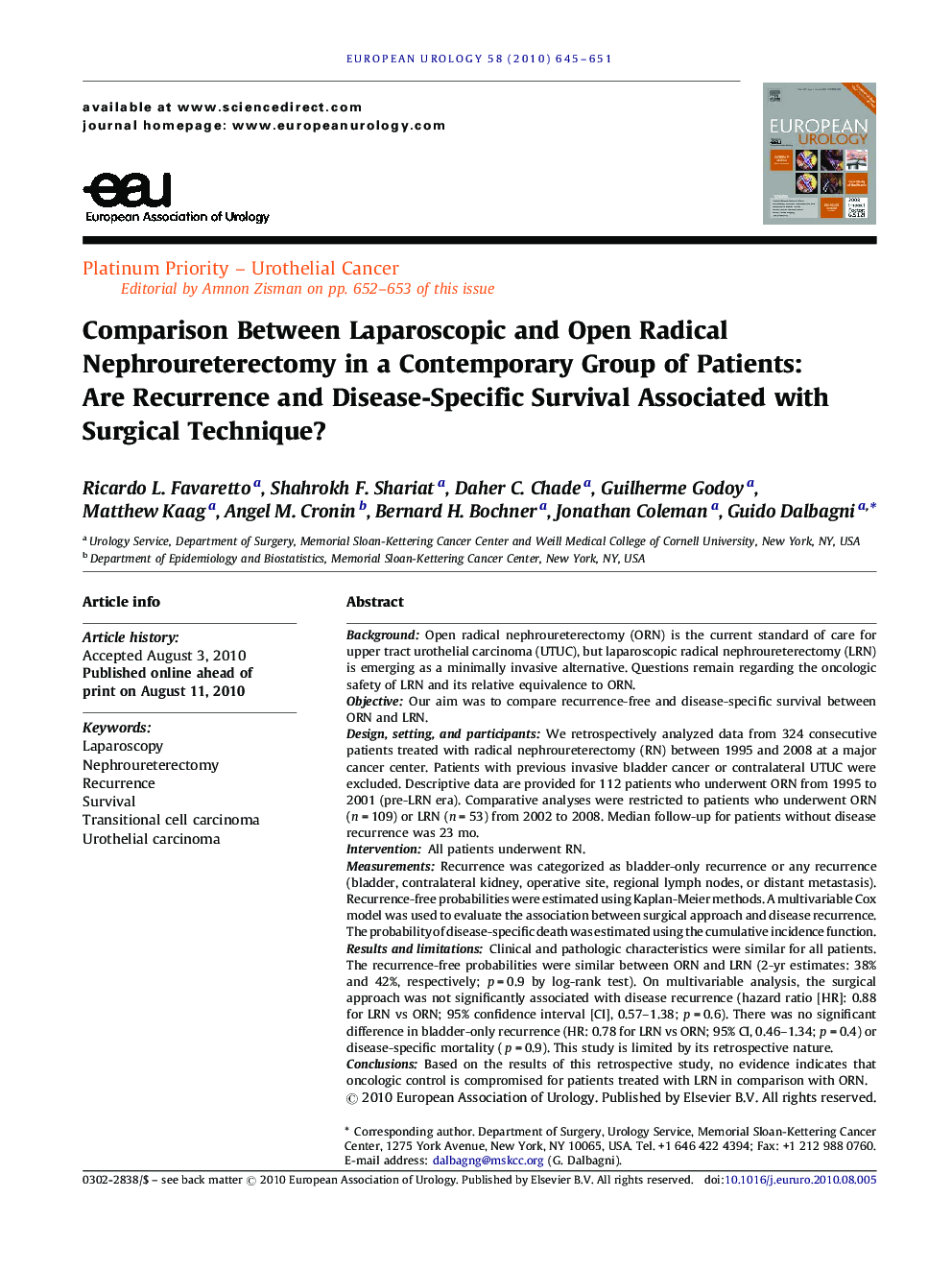| Article ID | Journal | Published Year | Pages | File Type |
|---|---|---|---|---|
| 3926234 | European Urology | 2010 | 7 Pages |
BackgroundOpen radical nephroureterectomy (ORN) is the current standard of care for upper tract urothelial carcinoma (UTUC), but laparoscopic radical nephroureterectomy (LRN) is emerging as a minimally invasive alternative. Questions remain regarding the oncologic safety of LRN and its relative equivalence to ORN.ObjectiveOur aim was to compare recurrence-free and disease-specific survival between ORN and LRN.Design, setting, and participantsWe retrospectively analyzed data from 324 consecutive patients treated with radical nephroureterectomy (RN) between 1995 and 2008 at a major cancer center. Patients with previous invasive bladder cancer or contralateral UTUC were excluded. Descriptive data are provided for 112 patients who underwent ORN from 1995 to 2001 (pre-LRN era). Comparative analyses were restricted to patients who underwent ORN (n = 109) or LRN (n = 53) from 2002 to 2008. Median follow-up for patients without disease recurrence was 23 mo.InterventionAll patients underwent RN.MeasurementsRecurrence was categorized as bladder-only recurrence or any recurrence (bladder, contralateral kidney, operative site, regional lymph nodes, or distant metastasis). Recurrence-free probabilities were estimated using Kaplan-Meier methods. A multivariable Cox model was used to evaluate the association between surgical approach and disease recurrence. The probability of disease-specific death was estimated using the cumulative incidence function.Results and limitationsClinical and pathologic characteristics were similar for all patients. The recurrence-free probabilities were similar between ORN and LRN (2-yr estimates: 38% and 42%, respectively; p = 0.9 by log-rank test). On multivariable analysis, the surgical approach was not significantly associated with disease recurrence (hazard ratio [HR]: 0.88 for LRN vs ORN; 95% confidence interval [CI], 0.57–1.38; p = 0.6). There was no significant difference in bladder-only recurrence (HR: 0.78 for LRN vs ORN; 95% CI, 0.46–1.34; p = 0.4) or disease-specific mortality (p = 0.9). This study is limited by its retrospective nature.ConclusionsBased on the results of this retrospective study, no evidence indicates that oncologic control is compromised for patients treated with LRN in comparison with ORN.
